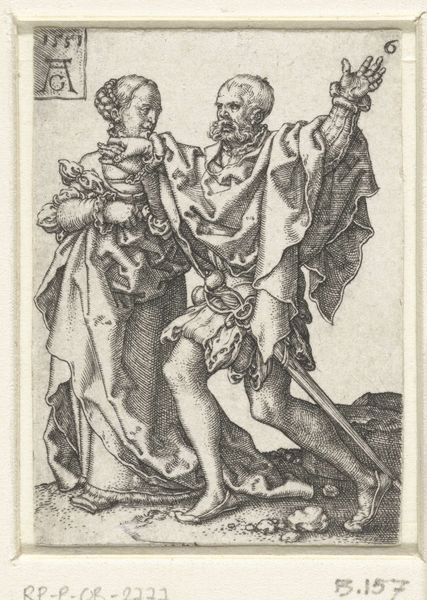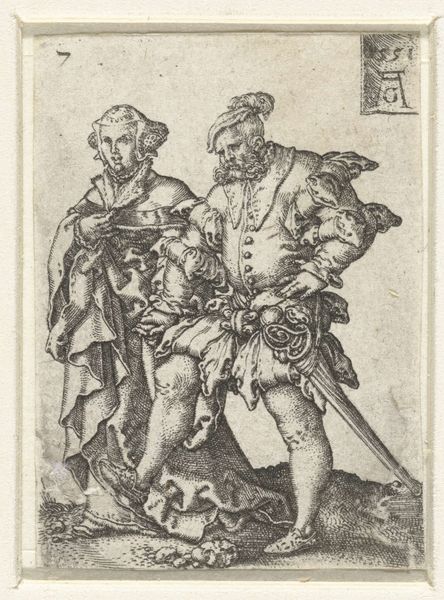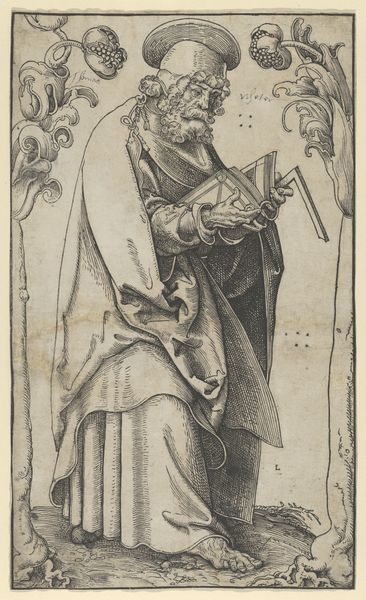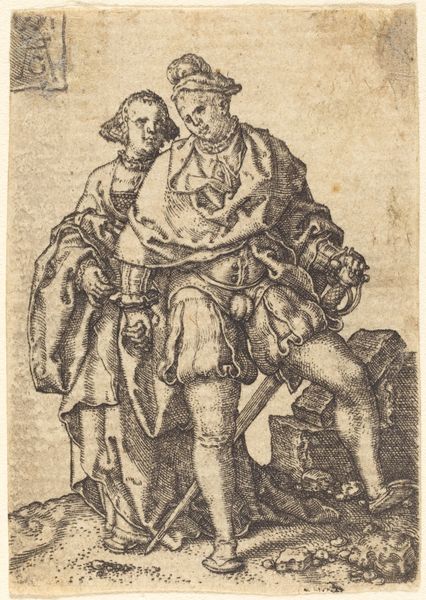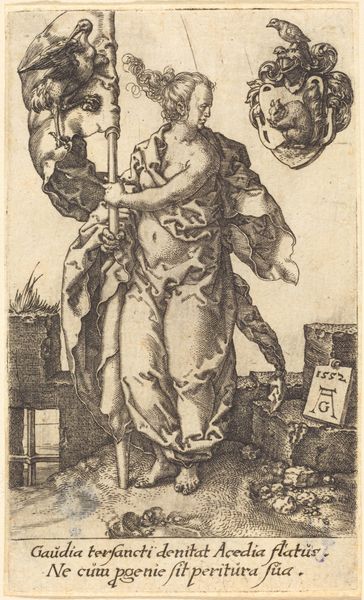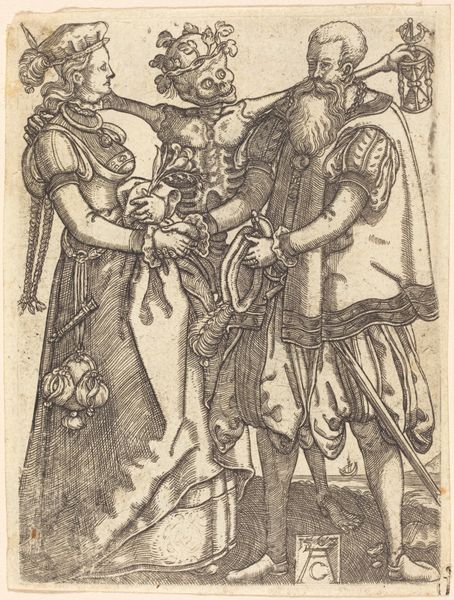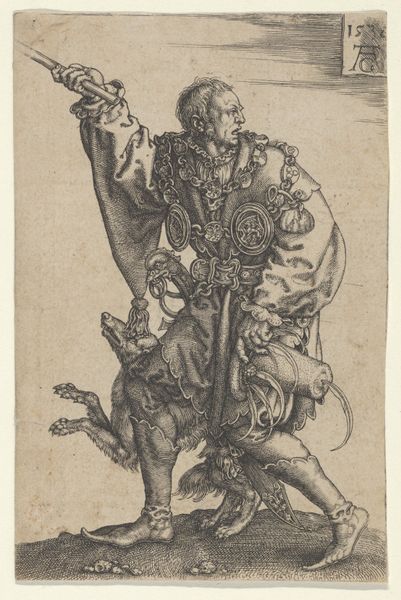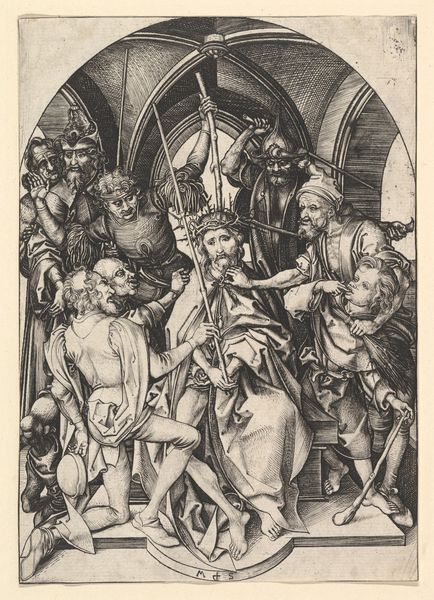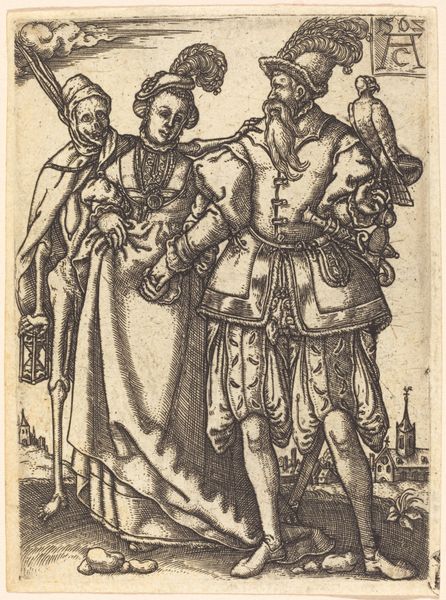
drawing, print, engraving
#
drawing
# print
#
figuration
#
11_renaissance
#
genre-painting
#
northern-renaissance
#
engraving
Copyright: National Gallery of Art: CC0 1.0
Editor: Here we have Heinrich Aldegrever's "Dancing Couple" from 1551, an engraving. The couple seems awkwardly posed. What do you see in this piece? Curator: Well, beyond the somewhat stilted composition, it invites us to consider the social performance embedded in dance during the Renaissance. These figures are not merely dancing; they are enacting a carefully choreographed display of status and gender roles. What do you notice about their clothing and gestures? Editor: Their clothes look expensive and elaborate. The man's gesture looks a little...aggressive, almost like he's asserting dominance. Curator: Exactly! Aldegrever gives us insight into power dynamics. Notice how the woman's posture suggests a degree of constraint, even as she participates in the dance. And consider the man’s sword; it's not just an accessory. It emphasizes his masculine identity and social standing within a deeply patriarchal society. This dance isn’t just entertainment; it is an expression of codified power. Editor: That’s interesting. I initially saw it as a simple genre scene. Curator: Renaissance art is rarely simple. By unpacking the symbolism and social context, we begin to understand the complex negotiations of identity taking place within these seemingly innocuous images. What is your feeling now looking at it? Editor: I now appreciate the complexity beneath the surface! It's like a window into a world where every gesture carries weight. Curator: Precisely. And remembering this art reflects not universal stories, but those of the privileged classes, opens another path for understanding.
Comments
No comments
Be the first to comment and join the conversation on the ultimate creative platform.
